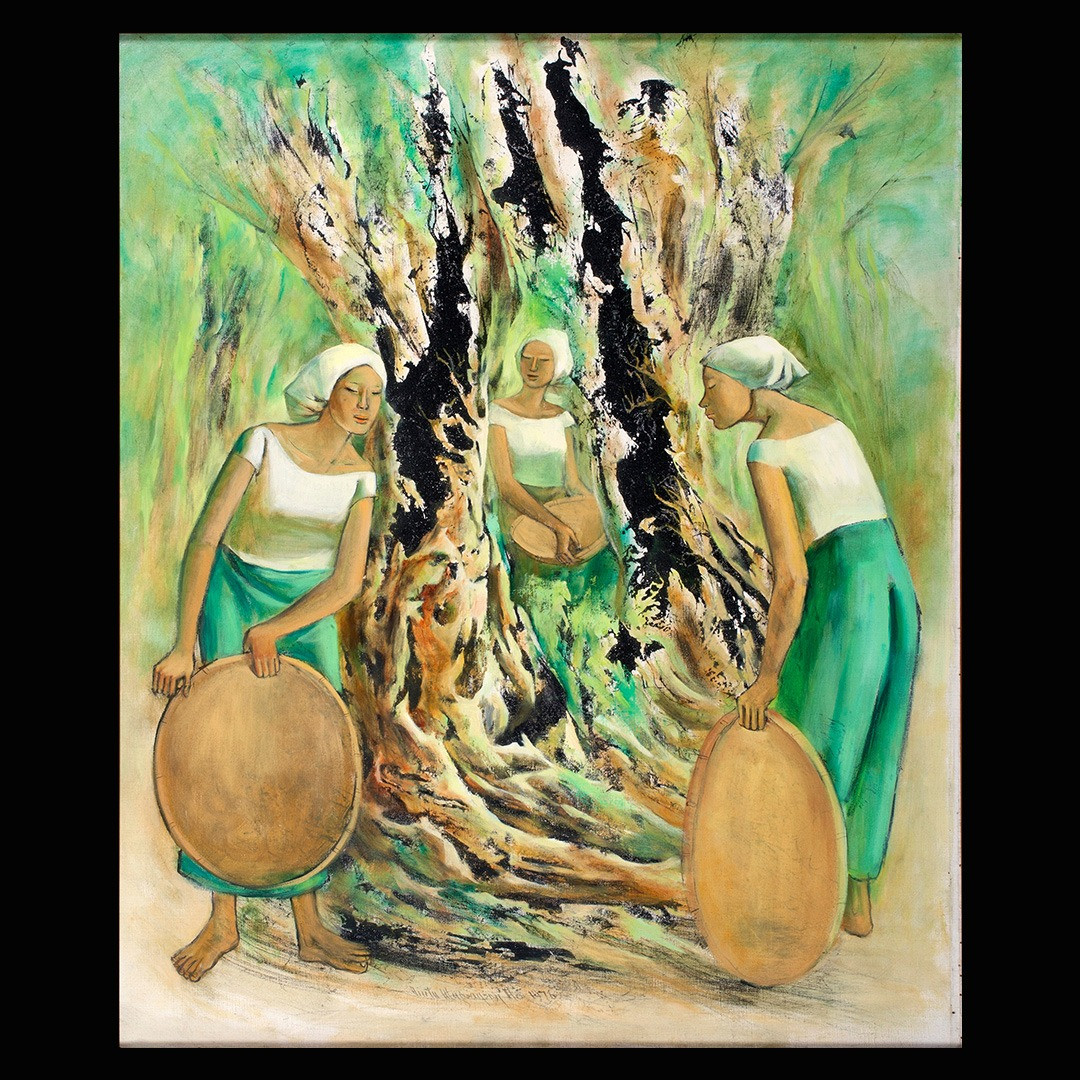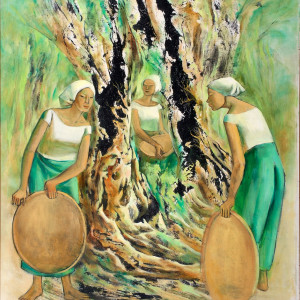Three Women with Baskets
Painting
Artist
ANITA MAGSAYSAY-HO
Date
1976
Language Group
Tagalog
Artist Collective
n/a
Geographical Setting
Metro Manila
Provenance
none
Making Classification
Painting
Making Sub Classification
Data currently unavailable
Anthropological Class
Artwork
Museological Class
Data currently unavailable
Museological Sub Class
Data currently unavailable
Condition
Excellent
Material
Oil on canvas
Dimensions
90.50 x 75.50 x cm
Artist Statement
Data currently unavailable
Bibliography
To know more about this artwork, watch its feature from CCP's Cultural Cache Online video series: Cultural Cache Online Season 3: “Three Women with Baskets” by Anita Magsaysay-Ho
Annotation
The painting by Anita Magsaysay-Ho is an agricultural scene fairly typical in her entire oeuvre. The female figures are Classically composed, recalled in formulations of feminine beauty in the Western world’s Three Graces and Three Muses through the last two millennia—visually readable as re-set in the context of rice agriculture. The reference to rice is perceptible to most Filipinos: the baskets used for separating the grain from the chaff. In Magsaysay-Ho’s formulation, the women are abstracted into a prototypical figure identified by peasant dress and headscarf. Contextualized in a flattened color field that also signals a generic sense of agricultural labor in the Philippines, the women are anonymized and made symbolic, not of beauty, but of a labor archetype: the peasant as woman. Magsaysay-Ho’s painterly technique of quick strokes is deployed in this case to convey an idea of grace in a green space that is interrupted by a dark region of paint.
Curator’s commentary
The topic of rice and rice agriculture remained an undercurrent in the Philippine visual arts through its various trajectories in the 20th century. Even when the topic is immanent rather than overt in the artwork itself, such as in this painting by Anita Magsaysay-Ho, the intersection of rice and art inevitably brings to surface the attitudes towards this staple in the various, historically determined cultures thriving in the Philippines. The Magsaysay-Ho painting idealizes peasant experience in the fields (very much as National Artist Fernando Amorsolo did) despite her committed Modernism with a proclivity towards Social Realism. This idealization was given a visual counter narrative by a more dramatic vein of Social Realism than Magsaysay-Ho’s, that held sway in the decades succeeding the emergence of Modernism in the Philippines—furthermore with a shift from rice to sugar plantation agriculture.
Nevertheless, both the deployment of Modernism to persist with a Philippine pastorale and its counter narrative in another, Social Realist but equally Modernist stream, can be contrasted with the relation of rice agriculture and the bulol and punamhan sculpture in traditional Ifugao culture. The latter tradition as expressed in sculpture neither idealizes nor critiques rice agriculture, because, outside Modernism and indeed outside all civilizational discourses, cultural expression exists outside the desire to idealize nor critique. The tradition exists to give the community with physical metonym for its complex cosmology.
Licensing
The exclusive Intellectual Property Rights of the information contained in this website remains with the artist/s and the Cultural Center of the Philippines and is protected by the laws of the Republic of the Philippines. No part of this website may be reproduced, published, distributed, or transmitted in any public form or by any commercial means without prior written permission of the artist/s and CCP.
For permission and licensing requests, email vamd@culturalcenter.gov.ph.
Feedback
We are committed to learning more about our collections and updating the content of this website. Does this record contain inaccurate information or language that you feel we should improve or change? Please contact us at vamd@culturalcenter.gov.ph.



